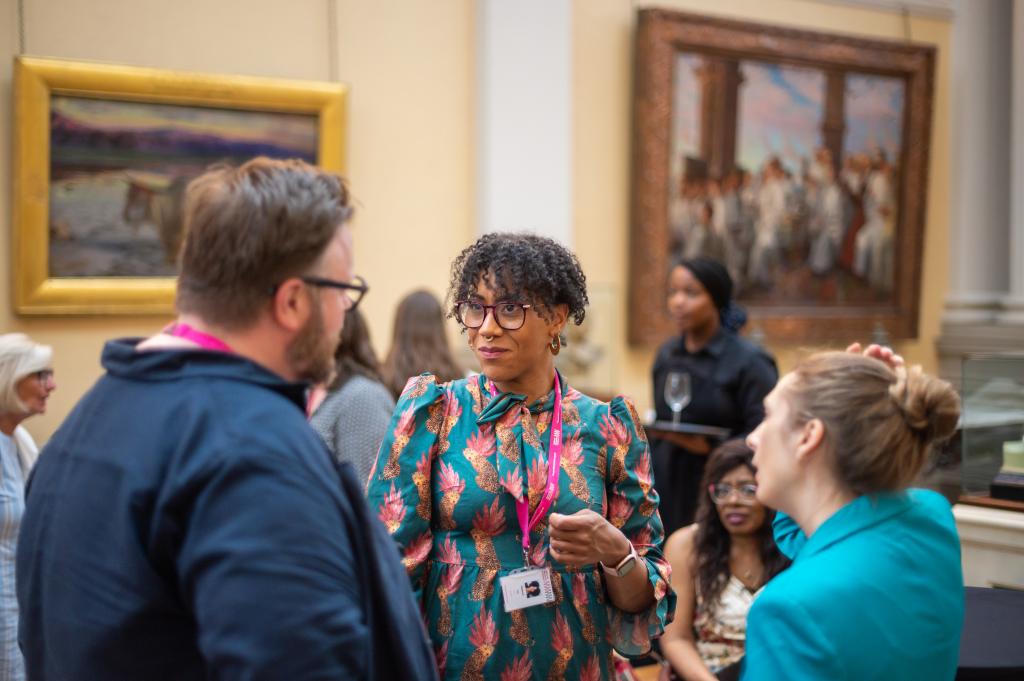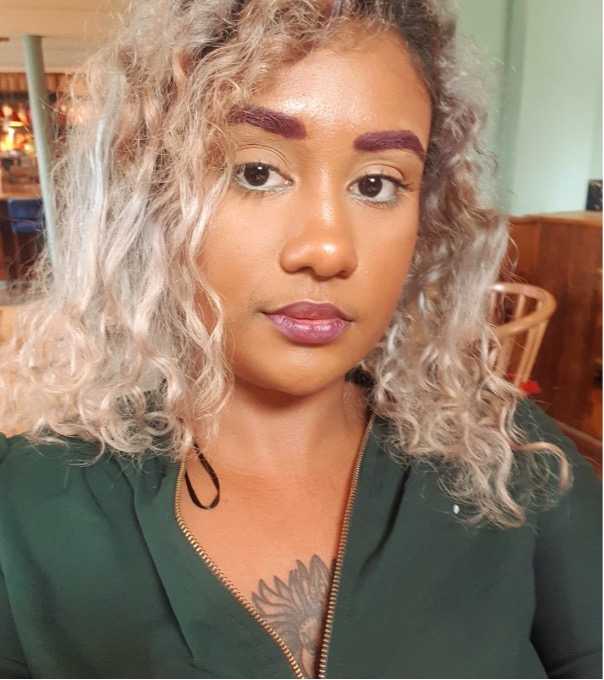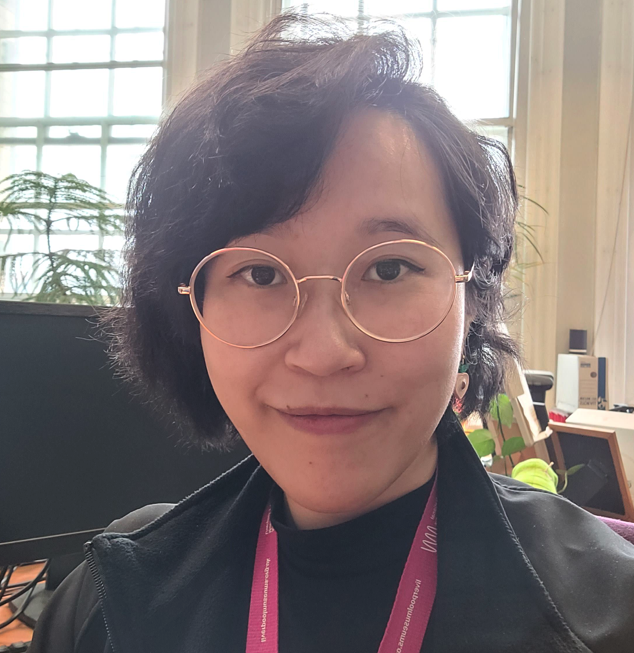Why we’re no longer using BAME
What’s the power in a name? Rebecca Loy, Diversity & Inclusion Partner, explains why we're no longer using the term 'BAME' at National Museums Liverpool.

BAME, although tolerated by many, has always been a contentious term.
At National Museums Liverpool, we’ve historically had a ‘BAME staff group’, but at the end of last year, we collectively decided to change the name to the ‘GEM staff group’. It’s a name that the group feels more able to self-identify with, that it finds more reflective and more empowering.
But what’s the power in a name? Why change name at all? What is wrong with the term BAME (Black, Asian or Minority Ethnic)? And why would we change it specifically to GEM (people of the Global Ethnic Majority).
According to the YouGov website only 28% of ‘minority ethnicity groups’ in the UK actually find the term BAME acceptable. It conflates race with ethnicity as if their meaning is alike. Black of course refers to shared ‘racial’ characteristics while Asian refers to people whom directly or through ancestry, shared a continent. Neither of these terms fully represent the diversity of the groups to which they refer while all other groups characterised by having a different racial appearance or ethnicity are clunkily bundled together unnamed, seemingly less visible, seemingly less important and definitively othered in a term which should aim to empower.
Not being represented within a term that should represent you is an act of symbolic violence in which your visibility is reduced. Being that this increased invisibility is already within the context of a system in which you are fighting for representation and visibility, the violence is all the worse.
Does BAME actually describe us? The term BAME, though referring to people who are Black, Asian or another minority, actually firstly refers to whiteness. You can only be an ethnic minority within the context of an ethnic majority. So in actuality this phrase positions being white and British at the centre as the norm and each time a person is referred to as BAME it is in reference to a deviation from the norm.
The term GEM or (people of the) Global Ethnic Majority was coined by Rosemary Campbell-Stephens as part of her 2003-2011 leadership work with the London Challenge Initiative. While there is no term that will probably ever represent the diversity of the 80% of the world which isn’t white and western, GEM does rid us of clunky conflations of race and ethnicity and positions us within a global context as opposed to deviations.
Instead of referring to lack or deficit (minority literally gives the connotation of ‘too small or not enough’) GEM disrupts the narrative as groups can choose to self-define, an empowering step in escaping the prescribed deficit identity. The importance of definition is vital as BAME attempts to define the sum of us so erroneously, while GEM, understanding its limitations chooses a more inclusive method of self-definition.
Choosing to define as GEM over BAME is to think of yourself, not to start with white being normal, then after, define yourself by how you differ. It is to accept and celebrate your global positioning even within the context of your Britishness. It is to join a collective which doesn’t attempt to define all you are yet allows representation of your diversity and your shared experiences as those who’ve been othered. Finally, it is to define yourself by this truth; ‘in this world I am not a minority’, asserting and claiming just how normal you are all the while demonstrating in that phrase, the privilege of being ascribed normality. Any acronym so closely associated with precious or semi-precious stones can’t be bad either.
GEM staff group – in their own words

Lois South, Learning Facilitator
For a long time labels and slurs have been imposed on Global Ethnic Majority communities from those who don’t know or understand the intricacies of our communities. The oppressive nomenclature* serves to flatten, homogenise** and degrade us, all while keeping whiteness at the centre.
In 1981, uprisings erupted across the country from Global Ethnic Majority community members who felt the need to take to the streets to protest against unfair and racist treatment they experienced in this country.
As Darcus Howe said, we were tired of:
“complaining to police about police; complaining to magistrates about magistrates; complaining to judges about judges; and complaining to politicians about politicians.”- Howe, 1970
After the Scarman report, that was commissioned by the government as a result of the uprisings, many local councils in London adopted the term Black Minority Ethnic (BME). This was later changed to Black Asian Minority Ethnic (BAME) to include Asian communities. Classifications placed on our communities, like BAME, have always been imperialistic. They allow for increased scrutiny under the white gaze leaving community members vulnerable to surveillance, monitoring, and sometimes violence.
The term flattens us and places us at the peripheries or margins while maintaining whiteness as the centre. We are not the footnotes in a white person’s narrative. We deserve to be centred.
During the second wave of Black Lives Matter protests after the lynching of George Floyd in 2020, calls to decentre whiteness were heard from GEM people from around the world. The term BAME has been called into question due to the ambiguity of Minority Ethnic along with the insidious way in which it maintains whiteness.
The term Global Ethnic Majority was created by Rosemary Campbell-Stephens MBE. Rosemary – a black British woman, makes it clear that her existence and that the existence of all Global Majority people does not exist in relation to whiteness. The term refers to Black, Asian, Indigenous, mixed heritage, and all other racially marked people and allows us to see ourselves as part of a global community, not just as minorities orbiting whiteness. The term is both inclusive and decolonising, subverting the white gaze. We are the majority. We have power.
*Nomenclature - a set or system of assigned names or terms
**Homogenise - to make uniform or similar/same

Jessica Yung, Participation Facilitator
Growing up, we had a family friend who imparting a single piece of advice for a happy life: buy yourself some nice things but especially spend money on good fitting shoes and a comfortable bed. We spend most of our lives treading physical and metaphorical paths each day in the search of our better selves, so what better thing can we do for ourselves than to find physical and metaphorical shoes that fit us just right? Shoes that feel the best; shoes that let us be our best? Sometimes following trends and fashions, influences from across the globe serve us well until that annoying blister on the back of your heel appears and no amount of plasters or padded socks truly fix that problem. Stay with me here.
The first pair of metaphorical shoes I ever tried was Person of Colour. Shoes that were given to me to define that I was a person, just one that was different to everyone else. A person but one that wasn’t white. A guest. A pair of house slippers at someone else’s abode. I felt small, and like I had to excuse myself with every step. These shoes fit great at first, raising me up to a height that meant that I felt sort of good about myself until I started to notice the scuffs on the sides that wouldn’t buff out and the strange lump in the insole. I looked at my white neighbour’s shoes and noticed how pristine they looked – identical to mine in form but different.
Next, I tried BAME. Now, these were a different ball game. Beautiful shape, right support of the arch, sturdy soles on the bottom; but, as time wore on, I felt that, again, something was very off. These were like uniform issued shoes. Made for everyone and no one at the same time. The soles kept detaching, water kept seeping in in the rain, and the laces began to fray. I had to fight tooth and nail to try and get these shoes to stay looking and fitting like shoes are supposed to fit. Yet, no matter what I tried, I was only successfully wearing shoes that were pretending to be shoes. Even as I tried to customise them to express the beauty of my culture and heritage, they were still clunky and false. In the end, they just didn’t work for me, but they were all I had. Not to mention that it seemed to work for everyone else so why shouldn’t they work for me? Maybe my discomfort was my own fault?
More recently, Rebecca from our group, presented me with a box with GEM shoes. I was tentative at first, really uncertain and really uncomfortable with the idea that I should even be wearing them. Then I investigated it a bit more. Unlike following the trends and influences of the globe, particularly America, these shoes are made in the UK by Rosemary Campbell-Stephens; they were home grown and built with people like me in mind. I didn’t feel like a guest in my own shoes, nor did I feel like it was something chosen for me rather than by me. Instead, these shoes fit my feet, gave me the support I needed and lifted me up to heights of confidence and comfort I didn’t think I could possibly own outright. That’s what these shoes did. GEM reminds me that I’m not a guest and I’m not a person living on another’s terms; I’m a person with heritage, with culture, with histories, with stories, and with beauty – I am a person who deserves to be here, who has always been here, and who always will be here.
Unlike the other shoes, they let me show the way my ancestors danced and my cousins across the globe walk, right on the cobbles of William Brown Street, on the tiles of World Museum, and on the carpets of our galleries. These shoes let me be who I am without excuse, without apology, and without feeling disconnected from my kith and kin abroad, because, even though I am Chinese, I am British, and I am both; I am also a member of the Global Ethnic Majority. So, finally, I understand what our family friend was trying to say: in this lifetime, if you are going to spend time, energy, and soul on anything, spend it on a good fitting pair of shoes because they will be your companions for the stretch of road you’re going to walk; they’ll experience every bump, every plane, every step towards self-cultivation and growth that you’re going to make.
